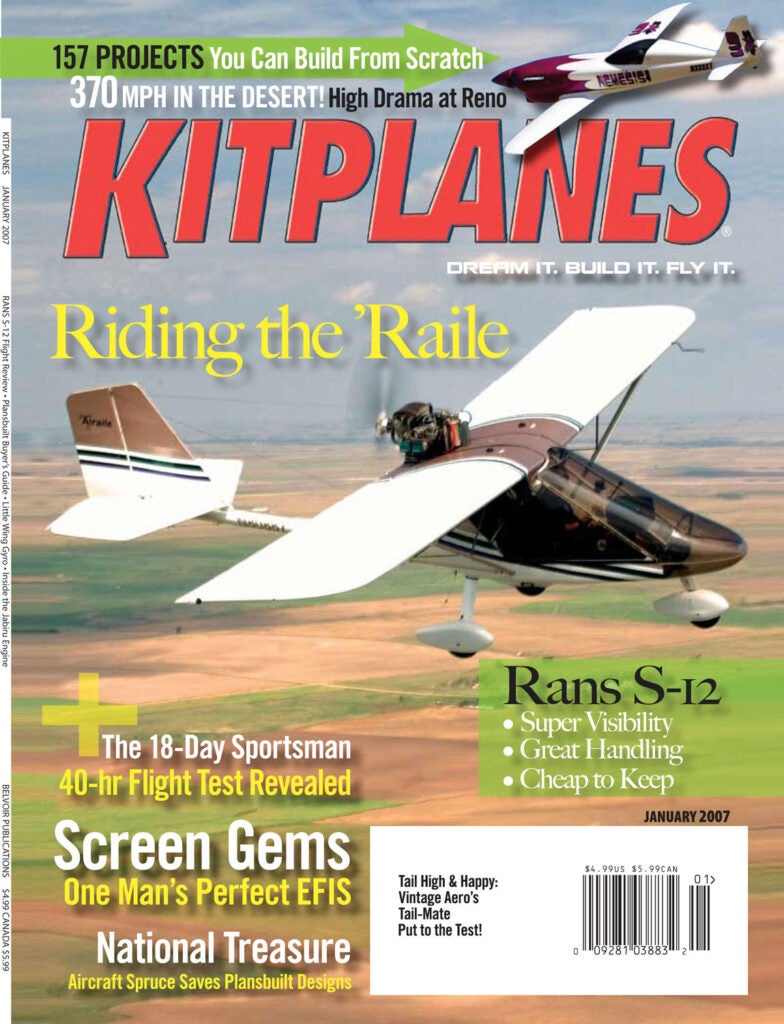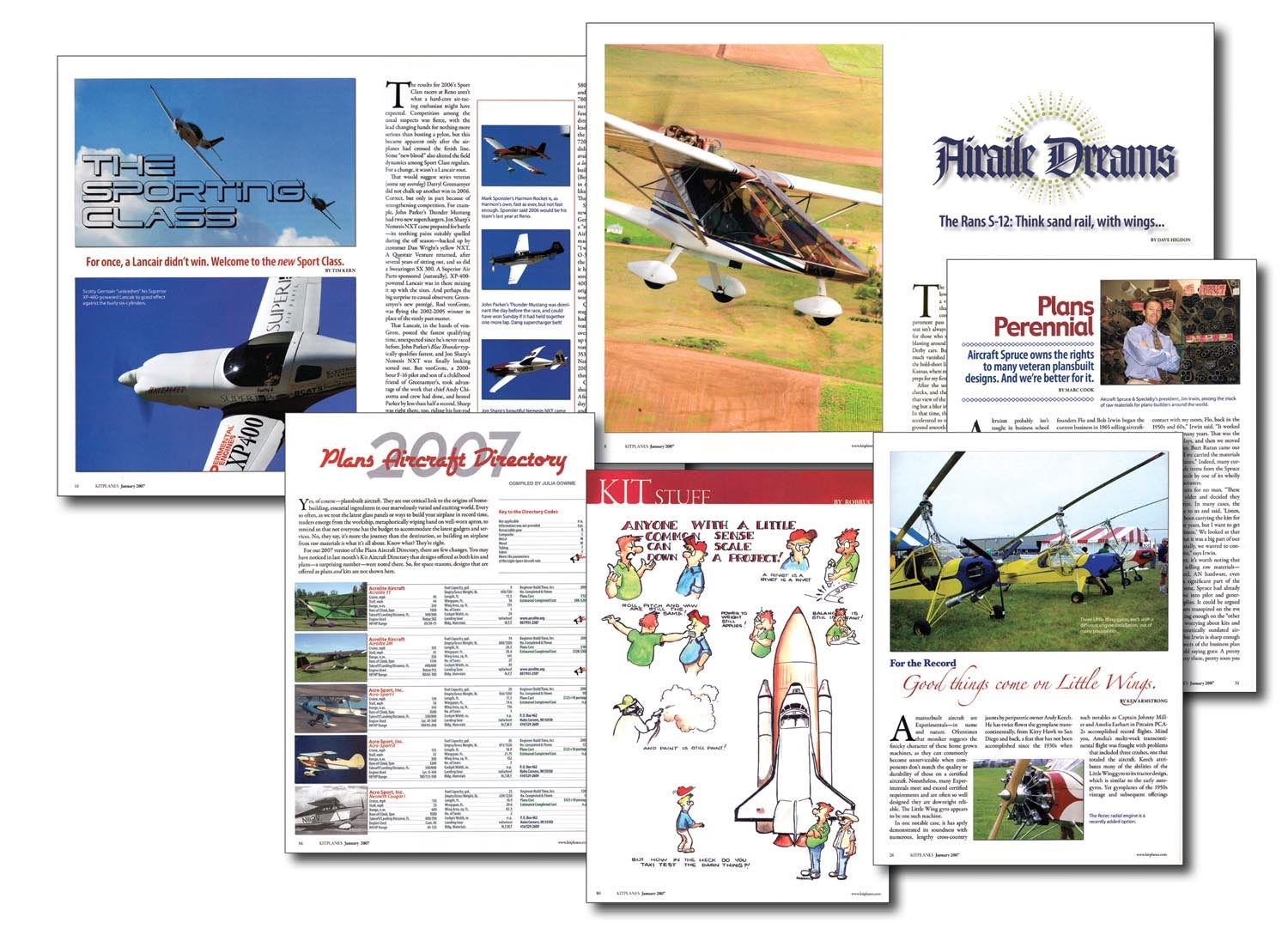
Our coverage for the 2006 Reno Air Races appeared in the January issue the next year, depicting what may well have been the apogee of Sport-class racing in the desert. That year, Rod vonGrote, flying Darryl Greenamyer’s Lancair, was brutally competitive against the airplane that had finally seemed to overcome its teething troubles: Jon Sharp’s Nemesis. That Sharp took the Sport Gold win at 360.389 mph reflects not only his team’s ability to tame the Nemesis but also that vonGrote had cut a pylon and been given a 12-second penalty. Author Tim Kern summed it up: “Reno 2006 was, by all counts, the most exciting year ever for Sport class. With a full field returning next year, we can expect to see more NXTs, more slick Lancairs, more factory sponsorship and more rookies.”
Dave Higdon flew and photographed the RANS S-12 Airaile for a flight review, noting that, at first, the design’s nearly all-glass nose provided a panoramic but disconcerting view. Most pilots aren’t accustomed to seeing the runway pass between their heels. With a cruise speed of 90 knots with a Rotax 912 S, the Airaile was always more about the nearly unfiltered aviation experience than slicing across the country. Higdon summed it up: “Comfortable seating, ample, if not generous, elbowroom, plenty of headroom and honest flying traits are hallmarks of many a fun airplane. You can count the S-12XL Airaile among that elite group.”

Your current editor in chief described the 40-hour flight test of his then-new Glasair Aviation Sportsman, even going so far as to associate the development process to that of watching sausages being made. In particular, he relates chasing high oil temperatures with the new Barrett-built IO-390 on board. This was the first use of the engine in the Sportsman and the initial choice of oil cooler was insufficient. Worse, the mistake wasn’t discovered until after the airplane had left the cool Pacific Northwest area where it was built and initially flight tested. These temps would surface once the Sportsman had returned to Southern California. The short-term (ultimately final) fix was fitting the overlarge oil cooler from a Glasair III. It was the sledgehammer approach but it worked.
Ken Armstrong recalled Andy Keech’s world-record attempts in the Little Wings gyroplane, an unusual design in that it uses a tractor engine. Keech had achieved some 19 world records, including altitude (26,408 feet), distance without refueling (673 miles) and speed over a closed course (625 miles at 108 mph). Keech’s record-setter used a Rotax 914, while the more nostalgia-inclined could choose the Rotec radial for the Little Wings.
We also included a story that opened to our 21-page 2007 Plansbuilt Aircraft Directory—set apart from the Kitbuilt Directory the issue before (and combined for our 2024 version)—highlighting how Aircraft Spruce & Speciality had taken over care of many plansbuilt designs whose originators had passed on or elected to leave the marketplace. Owner Jim Irwin described how, in the 1960s and ’70s, those active in the plansbuilt world had come to Aircraft Spruce in search of materials kits, noting that “all that stuff is already in your catalog, Jim,” which only fueled the relationship between designer and parts supplier. Irwin considered the company to be more of a steward of the designs than a developer and admitted that selling plans wasn’t a big part of the business. “The number of plans we sell is not great. It’s 20–30 sets a year for the older airplanes. The exception is the Cozy, with about 100 plans a year. That’s about what Nat [Puffer] was selling for years.” To no one’s surprise, Spruce is still at it, offering 17 kits including the Cozy, the Wittman Tailwind and five versions of the Starduster.













